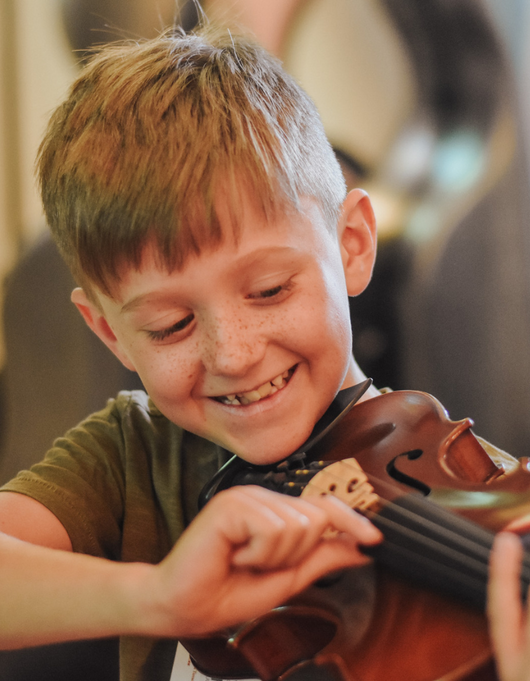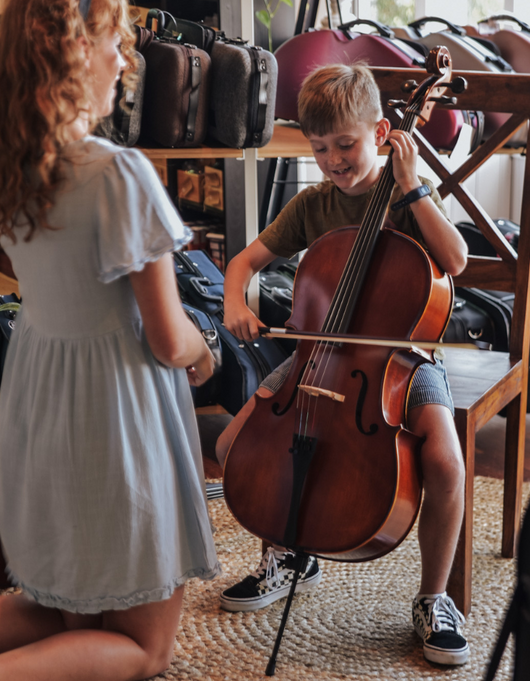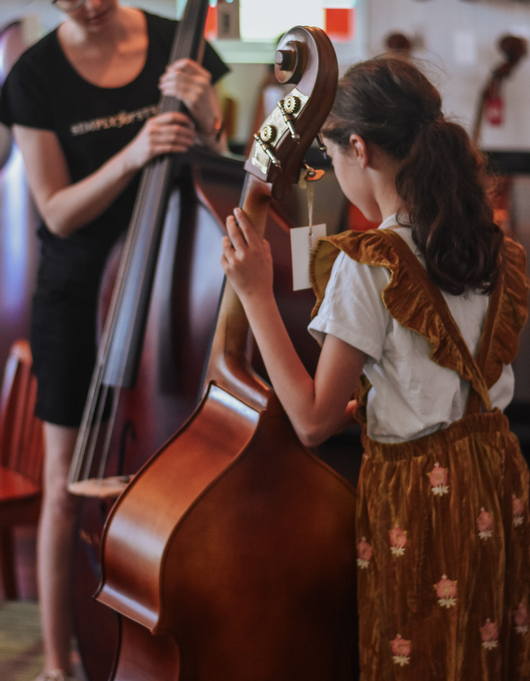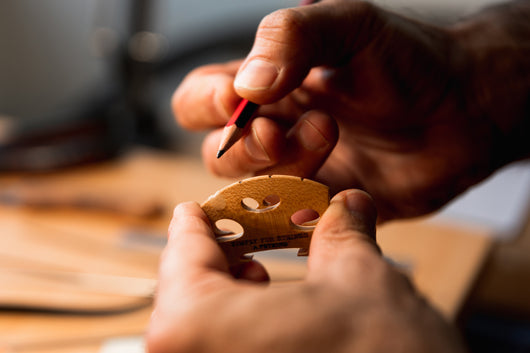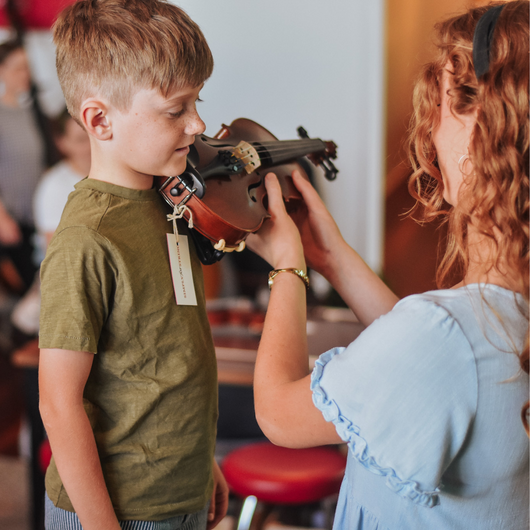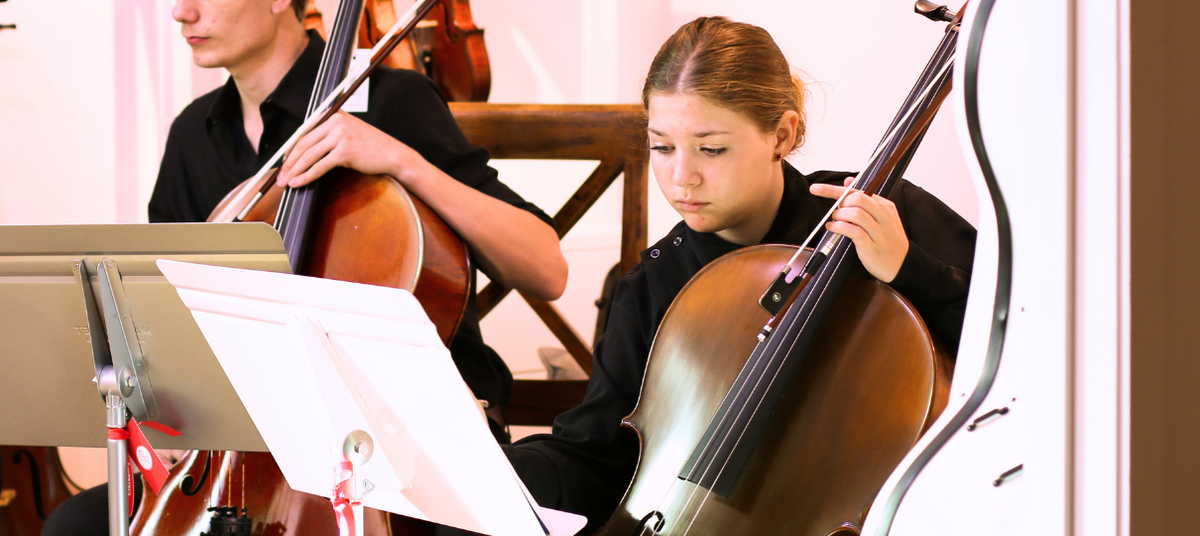It’s a common scenario – you ask your child if they’ve practiced their instrument today and they grumble and mumble and ask you to stop hassling them about it. Playing should be fun, but you may often feel like your encouragement is interpreted as nagging, instead.
Every parent wants to be able to encourage their child’s musical practice without coming across in this way, but it’s not always easy. You don’t want to discourage them by making playing feel like a chore – but you also want to make sure that they actually play the instrument they’ve made a commitment to.
To help you overcome this scenario, we’ve got three great tips to help your kids get the most out of their practice sessions, making them as fun and easy as possible.
1. Whatever instrument your child plays, be sure to use a practice stand or display stand to store their instrument on. Research has proven that if you don’t have to pull your instrument out from its case or out from under the bed or closet every time you want to play, you are less likely to come up with excuses not to practice.
In order to keep your violin in good condition while it’s on display, be sure to place the stand in the corner of a room, like the kids’ bedroom or the living room. Even if it does get a bit of a knock, it’ll be less likely to be knocked over completely if it’s in the corner. It’s also a good idea to keep it away from any direct sunlight, sources of extreme heat or breezy areas.
If you’re looking for an affordable display stand for your violin or cello, check out the stands available in our online store.
2. Long practice sessions don’t always equal excellent output. When you think of practice, quality definitely trumps quantity. Having shorter, more focused practice sessions for your child will generally bear greater results. As long as your child is in the right frame of mind, or the ‘open mode’ of brain function, they’ll be more receptive to their practice and take in more, despite the shorter practice time.
For each practice session, make sure that your child has some clear goals and targets, and that they know why they’re practicing (it could be for an upcoming concert, exam, or just for fun) and what they want to achieve from their session.
Be involved! Setting these goals can be a great way for you as a parent to get involved. You can work on the targets with your kids, reward them when they reach an agreed-upon goal and get them to really appreciate what their practice is about. This is another great reason to keep the violin on a stand in the living room, so that their practice will be in the midst of their family.
3. Start a playing group for your child and their friends so that sessions are about making music rather than just practicing. Encourage the kids to just have a jam, play around and explore the music making process. Once they’ve developed a solid musical framework, they can begin to explore more and start making their own music.
Flexible ensemble music is great for small playing groups, as it caters to players at different levels so that nobody feels like the piece they’re playing is too hard or too basic. Depending on how many players in the group, there are music books available called ‘Compatible Duets’, ‘Compatible Trios’, and ‘Compatible Quartets’ to enable them all to play together.
At Simply for Strings, we’ve got a great range of compatible music books for violin, viola, cello and double bass available in store and online here.
4. BONUS TIP! If you use the word ‘practice’, kids are more likely to associate it with a chore. Instead, you should ask, “Have you played your instrument today?” Psychologists say that this is a more favourable way to approach the topic.
To further improve their practice, we suggest investing in a decent music stand that is set at the right height and angle to make reading their sheet music much easier. You’d be amazed at how many people just prop their music up on couches, tables or anything they can find. A music stand will make things much more comfortable, so they’ll be less to stop due to pain or discomfort.
A metronome and tuner are also essential in every practice room. A tuner will ensure that their instrument is in tune every time they play, and this will make their practice sessions much more pleasurable for everyone in earshot. A metronome will also help them to understand different beats and tempos.
We hope these tips will help you and your child to get the most of their practice sessions! If you’d like to receive more advice and useful tips about violin playing, care and maintenance, sign up to the Simply for Strings newsletter. You’ll also be the first know about any new product releases, specials and upcoming sales!



